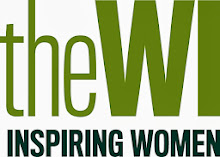Plan A – but there is a plan B & C & D. This we learned in Feldheim, a village in a rural community of 150 people in 36 households who took the decision to become 100% energy self-sufficient.
All households pooled their land, forming a co-operative which in turn rented the land to the energy company. The result was a wind farm which was built on this land in 1995.
Pig farming was a feature in this village and in consequence a biogas plant was also built. It is estimated that 50 - 60 new jobs were created with these developments.
Now in 2011 the statement that there was no conflict between economy and ecology might be true but it did take some time for the whole village to accept the changes. Although harmony now reigns it would appear that this might not have been true at the beginning. And eventually the wind farm company took the precaution of purchasing from individuals all their stockpiles of coal and wood which at first was deterring them from using the new system. Waste not want not, would probably have been the focus at that time.
The carrot for this project was two-fold; rent from the land, and cheap electricity. Once this was established, people in surrounding villages, also with a view of the turbines, wanted to benefit from them. They too bought into this new renewable scheme.
The company offers either to set up a trust fund from which the community benefits or to provide cheap energy. And although not in the original plan, the local grid was finally purchased by the village in 2010. Needless to say, people are much more aware of the energy they consume. A very clear reminder of the WI's own Eco Teams – very active in 2006/7.
One of the main drivers behind this was the need to create economic development in the area. One large industry in the area, owned by the wind farm company, guarantees to use generated energy for ten years and this is the crux of the viability of the whole project. The Feldheim trial was set in motion by the Federal Government looking into how green energy investment might give a boost to the area. And this does appear to have worked.
But back to plan A – this is the wind farm producing much more energy than the village can use; what is not used is 'sold on'. Plan B – if Plan A fails – is the use of biogas. This is generated from a mix of wheat and maize and liquid fertilizer from the pigs. All produced on land within a 10 kilometre area this lessens the transport issue! The biomass is fuelled by wood chips harvested from community owned wood in the surrounding forests. Then if all else fails, Plan C kicks in – two hot water tanks will generate heat for a number of hours. And there is more – Plan D – the adjacent large hall in the factory that produces trackers for photovoltaic cells will provide warmth for four hours.
All this was proudly shown to us by the mayor of the area who then guided us down the bumpy path across the open fields to view the 45 turbines that form the wind farm. A much bleaker day than when viewing the turbines in the Black Forest but, nonetheless, a memorable experience.
Back home and time to reflect on the trip from Basel to Berlin and places in between where renewable energy is a well understood concept and individuals have been motivated into action and backed by government. The Chernobyl disaster colours the background of most conversations concerning renewables.
In the areas of Germany we visited a high proportion of energy companies are owned by communities – in fact, 90% of renewable energy in Germany is generated by communities and over 50 of renewable companies are owned by individuals and communities. Flexibility in the German grid system means it can absorb these small providers. Many farmers are accepting of renewable energy. And here, communities have ownership of solutions.
We talk in the UK of the green deal and of green investment banking but investment conditions in the UK are currently so uncertain.
In 2005 we were told that there were 100 months left before tipping point is reached in the struggle against the changing climate. With approximately 30 months to go aspirations remain totally inadequate.
The experience of this past week; looking at community renewable energy in action, has given a sense of what’s possible. Community is at the heart of the success of all the schemes, underpinned by impassioned individuals at the heart of the movement.
skip to main |
skip to sidebar

Ruth Bond is the Chair of the National Federation of Women's Institutes
About Me

- The NFWI
- London, United Kingdom
- I am the Chair of the National Federation of Women's Institutes: the largest voluntary women's group in the UK. We offer women the chance to learn new skills and campaign on issues that matter to them.